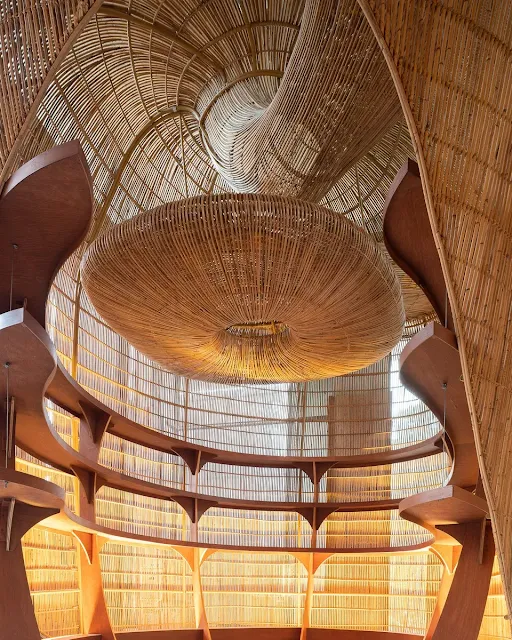An Art Collector’s gallery in Chiang Mai, Northern Thailand consisting of several interior pavilions enclosed by intricate gardens with exterior sculptures and ornate water features.
Enter projects Asia were commissioned to design the display of bespoke art works, using all natural materials. The international collection of silverware, fine china and porcelain includes the largest Wedgwood collection in South East Asia. The owner and avid collector sought to contextualize a lifelong ambition to exhibit the treasures gathered over a 50 year period.
Traditionally a clinical space in which art objects meet an audience, Enter Projects Asia were challenged to bring life to the gallery, with zoning, lighting and seating in their signature style blending 3D geometries with traditional Thai craftsmanship. “We sought to create an immersive experience, giving the space a warmth and depth uncharacteristic of conventional art galleries” states Patrick Keane, Enter Projects Asia Director.
The concept centers on contemporary design ideologies of fluid space, parametric work techniques and dynamic forms that cannot be viewed from a single vantage point. Using specialist software to simulate the movement of clouds and steam, the rattan structures thus weave their way seamlessly through the various zones, exterior and interior, culminating in a series of pod structures which serve as armatures for the forthcoming collection.
Rattan works commenced during the lockdown period with the fabrication of the three main pods, spanning 5m, 4m & 3.5m high respectively. Each batch of work was then transported from the factory to the site in Chiang Mai, and assembled on-site. The rattan lighting structure was the final installment, providing integration between interior and exterior as it floats harmoniously above the different zones, connecting courtyard to dining and through to the display areas.
A state of flux can be described of this project: endless change and transformation, a continual passage of movement, guided by nature and the natural forms embodied in the composition of the rattan. In turn, it can be said that nature provides the versatility of natural materials like rattan, grown in abundance all over South East Asia. “It is not hard to be sustainable in construction if we adapt to our environment. Why would we use synthetic, toxic plastics when we have all the noble materials we need at our fingertips?” asks Keane.
The experience of designing an art gallery, also leads Keane to believe that “designers need to seek alternative forms of art presentation to the clinical, antiseptic displays we are all familiar with. Art galleries for the future will be living organisms and multidimensional experiences, tied more closely to the environments we live in. Art is a representation of life“ states Keane. If it is ‘life’ that he and his team intended to bring to this project, then the result can be said to be the purist embodiment of this: vital, innovative and evolutionary.










No comments:
Post a Comment